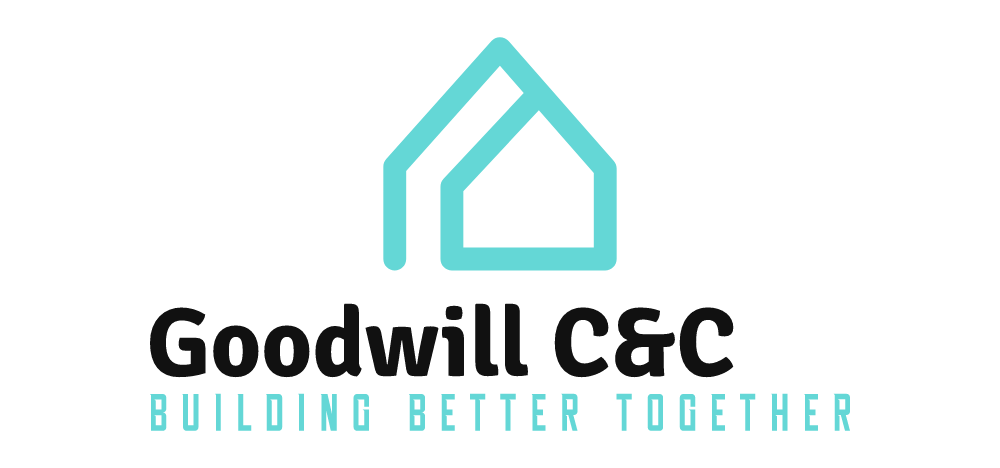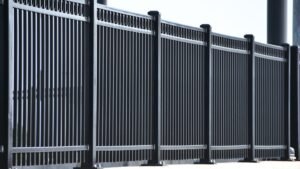Welcome to your go-to guide on understanding NZ’s unitary plan height restrictions for fences! Whether you’re planning a new fence for your property or upgrading an existing one, it’s important to know the regulations to avoid any costly mistakes. In New Zealand, particularly under Auckland’s Unitary Plan, there are specific rules governing how tall your fence can be, and these restrictions exist to balance privacy, safety, and the overall look of neighborhoods. In this article, we’ll break down the essential guidelines, explain any exceptions, and walk you through the process of ensuring your fence complies with local laws, helping you avoid potential fines or disputes with neighbors. Let’s dive into everything you need to know to confidently build the perfect fence while staying within legal boundaries.
The height restrictions for fences under NZ’s Unitary Plan generally limit fences to 1.8 meters for side and rear boundaries and 1.2 meters for street-facing fences in most residential areas. Exceptions may apply, such as in cases requiring more privacy or noise reduction, but exceeding these limits typically requires resource consent from the local council. Always check with your local council to ensure compliance with these regulations before building or modifying a fence.
Table of Contents
Understanding New Zealand’s Unitary Plan
The Unitary Plan is a crucial document in managing land use and development in Auckland, New Zealand. It serves as the central blueprint for how the city grows, ensuring that development is sustainable, well-planned, and meets the needs of a growing population. Whether you’re a homeowner, property developer, or someone working on a DIY project like building a fence, it’s essential to understand the impact of the Unitary Plan on what you can and can’t do with your property.
What is the Unitary Plan?
The Auckland Unitary Plan is essentially a rulebook designed to guide and regulate development across the Auckland region. It lays out specific rules and guidelines that dictate how land can be used, what can be built, and where certain types of development can take place. The overarching goal of the Unitary Plan is to promote sustainable growth, ensuring that Auckland can accommodate its increasing population while protecting natural resources and maintaining a high quality of life for its residents.
This comprehensive plan covers everything from residential building projects to commercial developments, infrastructure improvements, and even environmental protections. One often-overlooked aspect of the Unitary Plan is its role in regulating smaller, yet still important, details such as the height of fences on residential properties. If you’re planning to build or modify a fence, understanding these rules can help you avoid fines, disputes with neighbors, or complications with local authorities.
The plan aims to balance urban development with the need to preserve Auckland’s natural beauty and ensure that housing, transport, and business developments are sustainable over the long term. It’s also meant to prevent urban sprawl, focusing on more compact, efficient land use.
Who Needs to Know About It?
Understanding the Unitary Plan is vital for several groups of people.
- Homeowners: If you own property in Auckland, the Unitary Plan affects you directly. Whether you’re thinking about making modifications to your home, subdividing your land, or even building a fence, this plan sets out what you can legally do. For example, you may need to adhere to specific height limits for fences between your property and a neighboring one, depending on your location.
- Property Developers: Developers need to be especially familiar with the Unitary Plan because it dictates where and how new developments can be built. It outlines zoning requirements, height restrictions for buildings, environmental regulations, and the need for resource consent for certain projects. Ignoring these guidelines can lead to costly delays or legal issues.
- DIY Fence Builders: Even if you’re just planning a small project like putting up a new fence, the Unitary Plan still applies. Fence height and design rules are included in the plan, ensuring that your new structure doesn’t obstruct views, create hazards, or violate any neighborhood zoning laws.
Knowing the Unitary Plan inside and out can save you time, money, and hassle.
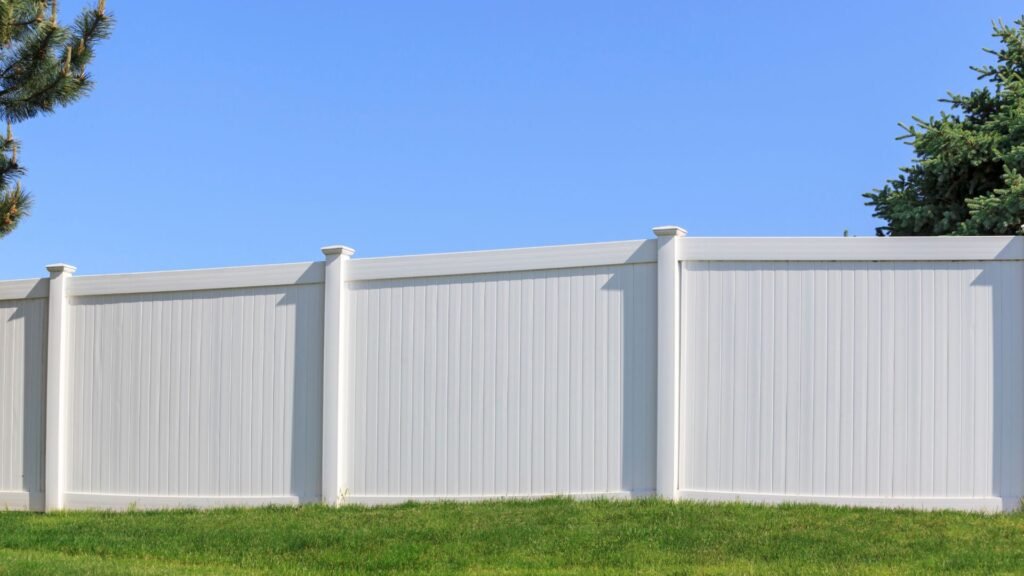
General Fence Height Restrictions In NZ Under The Unitary Plan
Understanding the general fence height restrictions in New Zealand, especially under the Unitary Plan, is crucial for homeowners. These guidelines are designed to maintain neighborhood aesthetics, ensure safety, and balance privacy with visibility. Let’s explore these restrictions in detail.
Standard Fence Heights
In most residential areas across New Zealand, the general maximum height for fences is clearly defined. For side and rear boundaries, the standard maximum height is 1.8 meters. This provides sufficient privacy between neighboring properties while maintaining harmony in the community.
On the other hand, street-facing fences are typically limited to a 1.2-meter height. This restriction is put in place to ensure that properties remain visually appealing from the street and do not obstruct sightlines for pedestrians or drivers.
For a clearer understanding, picture this: If you’re standing in your backyard, a typical side or rear fence would reach about the height of a tall adult, ensuring privacy from adjacent neighbors. However, if you look toward the front of your house, the street-facing fence would only come up to about shoulder height, allowing for open views and preventing the property from appearing walled off.
Front Yard Fences vs. Back/Side Yard Fences
The distinction between front yard and backyard/side yard fences plays a significant role in fence regulations. Front yard fences, facing the street, are subject to stricter height limitations because they directly impact the aesthetic of the neighborhood. Local councils prefer these fences to remain lower, ensuring the street maintains an open, welcoming feel. High fences at the front could block visibility, disrupt the street’s character, and create a sense of isolation, which is undesirable in residential areas.
In contrast, backyard and side yard fences have more lenient height restrictions (up to 1.8 meters), as these areas are considered more private. The higher fence allowance ensures that homeowners can enjoy their outdoor spaces without feeling overlooked by neighbors, adding a sense of personal privacy.
Impact on Neighbours
When erecting a fence, it’s essential to consider how it might impact your neighbors. A tall fence can significantly affect their view, sunlight, and overall sense of space. For example, a fence that’s too high may block sunlight from entering a neighbor’s garden or living areas, which could become a source of conflict.
To avoid disputes, some councils encourage property owners to seek neighbor consent if they’re planning to build a fence taller than the standard height limits. By having open communication with your neighbors and ensuring they are comfortable with the proposed fence, you can foster better relationships and avoid potential legal issues down the line.
In conclusion, the Unitary Plan’s general fence height restrictions aim to balance privacy, neighborhood aesthetics, and the well-being of everyone in the community. Always check with your local council and discuss your plans with your neighbors to ensure a smooth process when building or altering fences on your property.

Exceptions To The Fence Height Restrictions
When it comes to building a fence around your property, local regulations often set clear guidelines on how high your fence can be. However, there are specific situations where exceptions to these rules are possible. Understanding when and how these exceptions apply can help you plan your fence project more effectively while staying compliant with the law. Below, we break down the key scenarios where standard fence height restrictions may not apply.
Special Circumstances
There are certain cases where property owners may be allowed to build fences higher than the standard regulations permit. These exceptions often arise due to special needs such as:
- Security Concerns: If the safety of your property or family is at risk, local authorities may approve taller fences. This is especially common in high-crime areas or for properties that house valuable assets. In such cases, you may need to submit a security assessment along with your application for an exception.
- Privacy Needs: If your property is adjacent to busy roads or public spaces, a taller fence may be allowed to provide additional privacy. This is particularly relevant for homes that are overlooked by neighboring buildings or situated on corner lots.
- Noise Reduction: If your property is close to a source of significant noise pollution—like highways, airports, or commercial areas—local authorities might grant permission for a higher fence to act as a sound barrier. For instance, fences that are designed to absorb noise may be approved to exceed standard height limits.
To build a fence that exceeds the typical height restrictions, you will likely need to apply for a resource consent. This process typically involves demonstrating why the taller fence is necessary and how it will benefit your property without negatively impacting the surrounding area.
Areas with Specific Rules
In some zones, such as rural or commercial areas, the regulations surrounding fence heights can differ from those in residential zones. For example:
- In rural zones, where properties tend to be larger and more spread out, there may be fewer restrictions on fence heights. Taller fences can be permitted to contain livestock or provide shelter from wind and weather.
- Commercial zones may also have more lenient fence height rules, particularly for businesses that require added security or privacy, such as warehouses or industrial facilities.
It’s important to check the specific zoning laws for your area before planning any fence construction. Local council websites typically provide zoning maps and regulations to guide property owners.
Heritage Zones
If your property is located within a heritage zone, the rules surrounding fence height can be more restrictive. Heritage zones are established to preserve the aesthetic and historical value of an area, so any changes to the appearance of properties—including fences—must be carefully considered.
In these areas, you may be required to adhere to specific design guidelines that prioritize the visual harmony of the neighborhood. For example, fences in heritage zones might need to be constructed from certain materials or designed in a way that complements the historic architecture. Taller fences could be disallowed entirely, or if allowed, they may need to follow a particular style that aligns with the heritage character of the area.
Before making any changes in a heritage zone, it’s essential to consult with your local heritage board or planning authority. They can provide advice on what’s permitted and help you navigate the approval process if your fence requires an exception.
Understanding the exceptions to fence height restrictions is crucial for property owners who want to maximize their security, privacy, or noise protection while staying compliant with local laws. Whether you need to apply for a resource consent, check your zoning regulations, or consider heritage rules, being informed will save you time, effort, and potential legal headaches. Always consult your local council for the most accurate and up-to-date information specific to your area.
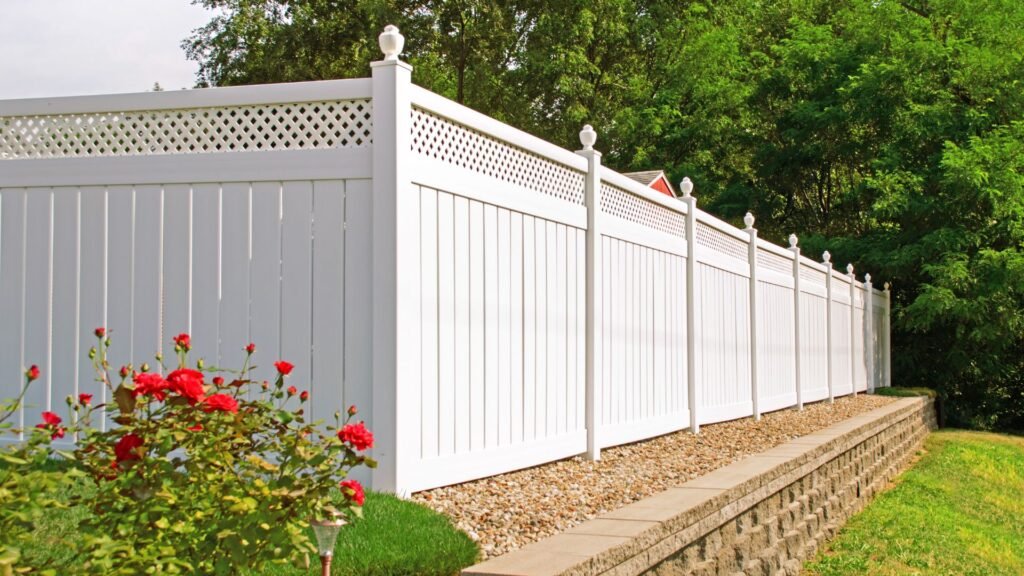
Process For Getting A Height Variation
If you’re planning to build a fence that exceeds local height limits, you’ll likely need to apply for a Resource Consent. This guide walks you through the essential steps and provides helpful tips to streamline the process.
What is a Resource Consent?
A Resource Consent is official permission from your local council, like the Auckland Council, allowing you to undertake activities that don’t meet the standard regulations under local planning rules. When it comes to fencing, councils often set specific height limits for structures. If your proposed fence exceeds these limits, a resource consent is required to ensure the height variation won’t negatively impact the surrounding environment or your neighbors.
In short, a resource consent acts as a safeguard to balance personal property changes with the needs and expectations of the broader community. Without it, building a fence that’s too high could result in fines or orders to remove or modify your fence.
Steps to Apply for Resource Consent
Applying for a resource consent for a height variation involves several steps. Here’s a clear outline to guide you through the process:
1. Consult Your Local Council: Before anything, it’s a good idea to check with the Auckland Council to determine if you need a resource consent for your specific project. They can confirm the height restrictions in your area and provide guidance on whether a consent application is necessary.
2. Prepare Your Documents: Once you confirm the need for a resource consent, the next step is gathering all the required documentation. Here’s a checklist of what you may need:
- Site Plans: Detailed drawings showing the location of the fence on your property.
- Elevations: Diagrams illustrating the height of the proposed fence from multiple viewpoints.
- Neighbor Approval Forms: If possible, getting your neighbors’ consent can strengthen your application. This involves talking to those who might be affected by the height variation and having them sign an approval form.
- Project Description: A written explanation outlining the reasons for the height variation and how it fits with your property and the surrounding area.
3. Submit Your Application: After compiling the required documents, you’ll submit your application to the Auckland Council. The council will review your submission to ensure it complies with relevant planning regulations and doesn’t adversely impact the environment or your neighbors.
4. Review and Decision: After the council receives your application, they may conduct further reviews or ask for more details. During this time, the council may notify your neighbors to seek their feedback. Once the review is complete, the council will issue a decision, either approving or declining your request for a height variation.
Cost and Timeframe
When applying for a resource consent, it’s important to plan for both the cost and the time it takes for approval.
- Cost: The cost of applying for a resource consent can vary, but typically ranges between $500 and $2,000, depending on the complexity of your project and whether it requires public notification. Additional fees may apply if further consultation or environmental impact assessments are needed.
- Timeframe: The resource consent process can take anywhere from 20 to 40 working days, depending on the complexity of your application. In some cases, if there are objections from neighbors or further assessments are needed, the process may take longer. To avoid delays, ensure your application is thorough and complete before submission.
Tips for Success
Securing approval for your resource consent is achievable with a little preparation and a strategic approach. Here are some key tips to help you succeed:
- Engage Early with Neighbors: One of the most common reasons for resource consent rejections is neighbor opposition. By involving your neighbors early in the process, you can address any concerns they might have and possibly secure their written approval. This can go a long way in smoothing the approval process.
- Hire a Professional: If you’re not comfortable preparing the necessary documents, it may be worth hiring a professional planner, surveyor, or architect. They can help draft accurate site plans and provide expertise to ensure your application is strong and meets council requirements.
- Be Thorough: The more detailed and complete your application, the less likely it is to be delayed by requests for additional information. Double-check your documents and make sure everything is clear and well-organized.
- Consider Alternatives: If you anticipate challenges in getting approval for your height variation, consider whether you can adjust the design of your fence or explore other ways to meet council regulations. Sometimes, a minor adjustment can save time and money.
By following these steps and tips, you’ll improve your chances of getting the resource consent you need for your height variation, allowing you to build the fence you envision while complying with local regulations.

Consequences Of Not Following Height Restrictions
When it comes to home improvement, building a fence may seem like a straightforward task, but ignoring local height restrictions can have significant consequences. These regulations exist for a reason, and failing to comply can lead to legal, financial, and interpersonal problems. Here, we’ll dive into the key consequences of not adhering to fence height restrictions and why it’s crucial to follow them.
Legal Implications
One of the most immediate consequences of building a fence that exceeds local height regulations is the legal trouble that can follow. Many municipalities have strict rules governing how high fences can be, particularly when they are close to property lines or public streets. Violating these regulations can result in various penalties, including:
- Fines: Homeowners may be fined for not adhering to local ordinances. These fines can range from hundreds to thousands of dollars depending on the severity of the violation and the jurisdiction.
- Forced Removal or Modification: In some cases, authorities may order you to either take down the fence or modify it to meet the legal requirements, which can be costly and time-consuming.
For instance, in a well-known case in [Your City], a homeowner was fined over $5,000 and forced to dismantle their newly installed 8-foot fence because it violated the city’s 6-foot height limit. The situation could have been easily avoided by researching local codes beforehand.
Impact on Property Value
Beyond the legal issues, building a non-compliant fence can also have a direct negative impact on your property value. While a fence is often seen as an attractive feature for privacy and security, if it doesn’t meet local regulations, it could actually detract from your home’s overall appeal. Potential buyers may see it as a future legal headache or an expense they will have to deal with.
Real estate agents often caution buyers and sellers about unpermitted structures, and a fence that violates height restrictions can:
- Devalue Your Property: Buyers may request a lower price to compensate for the cost of modifying or removing the fence.
- Hinder Future Sales: Prospective buyers could be scared off by the thought of having to address compliance issues themselves. In competitive real estate markets, this could mean your home stays on the market longer than you’d like.
Disputes with Neighbors
Another overlooked but significant consequence of not following fence height restrictions is the potential for disputes with neighbors. Fences, by their very nature, are often placed near property boundaries. If your fence is too high, it could block a neighbor’s view, reduce their sunlight, or just seem unsightly to them. This can lead to complaints and even formal disputes.
In many neighborhoods, especially those with homeowners’ associations (HOAs), neighbors may feel strongly about maintaining a consistent aesthetic. If they see a fence that appears too tall, they might file a complaint with local authorities or the HOA. These disputes can:
- Escalate Quickly: What starts as a simple complaint about fence height could evolve into a larger legal battle or personal feud, creating a hostile living environment.
- Damage Community Relationships: Living in harmony with neighbors is important, and a fence that doesn’t follow the rules could strain relationships, especially if neighbors feel their concerns are being ignored.
In some situations, ongoing disputes over a non-compliant fence could even lead to lawsuits or mediation, adding more stress and financial burden.
Building a fence may seem like a minor project, but ignoring local height restrictions can lead to serious consequences. From hefty fines and forced modifications to diminished property value and conflicts with neighbors, it’s clear that adhering to fence height regulations is essential. Before starting your project, always consult your local building codes and, if necessary, get professional advice to avoid these costly and stressful outcomes.
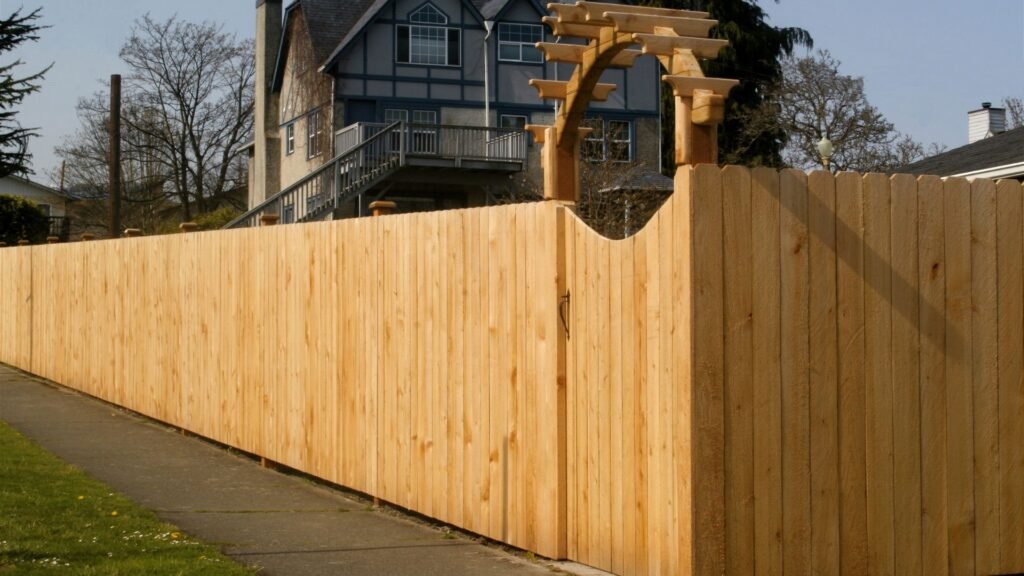
Practical Tips For Building A Compliant Fence
Building a fence on your property may seem straightforward, but there are several factors to consider to ensure it complies with local regulations while also serving your needs. Here are practical tips to help you build a fence that’s not only functional and aesthetically pleasing but also fully compliant with council guidelines.
1. Choosing the Right Materials
When it comes to choosing materials for your fence, it’s important to strike a balance between durability, appearance, and compliance with local building codes. Start by checking with your local council or homeowner’s association to see what materials are allowed. Some areas have restrictions on certain materials for aesthetic or safety reasons, so it’s crucial to make sure your fence won’t raise any red flags.
- Wood is a classic choice that’s versatile and visually appealing. It can be stained or painted to match your home’s exterior, but it requires regular maintenance to prevent rot or insect damage.
- Vinyl is a low-maintenance option that offers the look of wood without the upkeep. It’s durable and weather-resistant, though it may not have the natural charm of timber.
- Metal (such as aluminum or wrought iron) is incredibly sturdy and can provide a sleek, modern look. However, depending on your area, there may be restrictions on its use for safety or aesthetic reasons.
- Composite materials combine wood fibers and plastic, offering durability with less maintenance than traditional wood. It’s a great eco-friendly option, but ensure it complies with local codes before installation.
No matter the material, make sure it complements the overall look of your property and adheres to any guidelines regarding appearance and structure.
2. Design Ideas for Maximizing Privacy Within Height Limits
One of the primary reasons for installing a fence is to enhance privacy. However, councils often impose height limits on fences, especially those facing streets or shared boundaries. Here are some creative ways to maintain your privacy without exceeding height restrictions:
- Lattice Extensions: Adding a lattice to the top of your fence is a smart way to gain extra height while keeping the overall structure within legal limits. Lattice panels are semi-transparent, offering privacy without completely blocking out light or air, and they can add a decorative element to your fence.
- Planting Hedges or Vines: If your fence height is restricted, consider using natural elements to create privacy. Hedges or fast-growing plants like ivy or bamboo can provide a living screen that grows taller over time. Not only does this add greenery to your yard, but it also helps blend the fence with the surrounding environment, making it less intrusive.
- Stepped Fencing: If your property is on a slope, a stepped fence design can maintain an even appearance while adhering to height limits. This allows you to maximize height where necessary without exceeding the overall restrictions in any one area.
- Offset Panels: By staggering fence panels, you can create a design that allows airflow and light while obstructing direct views into your property. This technique adds a modern, layered look to your fence while still keeping you compliant with privacy laws.
3. DIY vs. Professional Help
Deciding whether to tackle your fencing project on your own or hire a professional can have a big impact on the final result. While a DIY approach can save money upfront, there are instances where hiring an expert might be the smarter choice, especially when it comes to compliance and intricate designs.
- When to DIY: If you’re confident in your skills and your fence is relatively simple, such as a small backyard boundary fence, a DIY project might be a great way to save money. Be sure to research your local regulations thoroughly to avoid any costly mistakes. Simple fences made from pre-assembled panels or easy-to-install materials like vinyl are good candidates for DIY projects.
- When to Hire a Professional: For more complex fencing needs—especially if the fence requires digging post holes, navigating sloped terrain, or dealing with zoning restrictions—it’s best to bring in a professional. Experienced contractors not only know how to work within legal parameters but also understand the nuances of different materials and how they perform over time. Moreover, professionals are more likely to get the necessary permits quickly and avoid any future legal headaches, ensuring your fence is built to last.
In summary, building a compliant fence is about balancing aesthetics, privacy, and local regulations. By choosing the right materials, incorporating creative design elements, and knowing when to call in a professional, you can create a fence that adds value and beauty to your property while staying fully compliant with council guidelines.
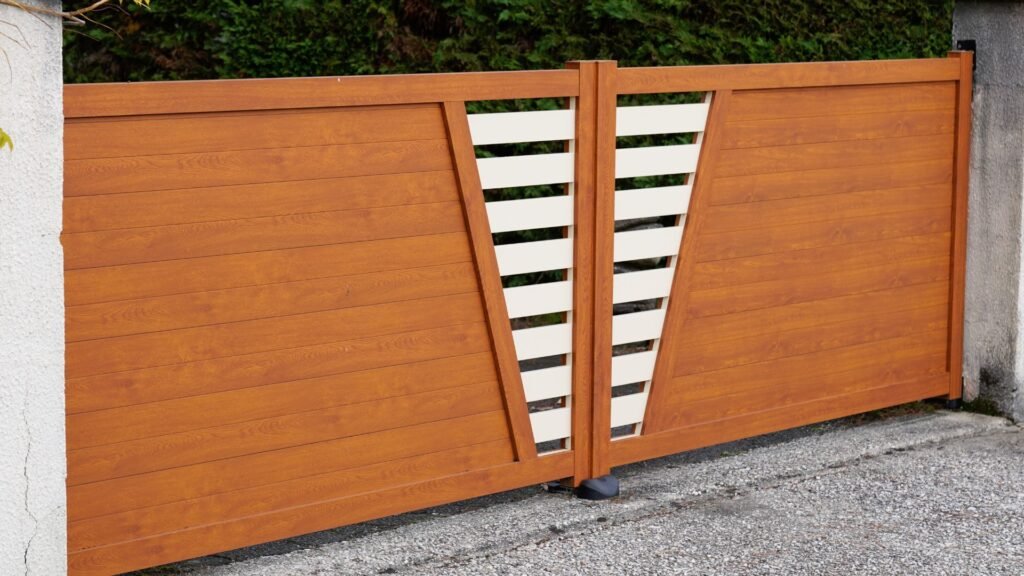
FAQs: About NZ’s Unitary Plan Height Restrictions For Fences
Can I build a fence taller than 1.8 meters without consent?
Generally, fences taller than 1.8 meters require resource consent from the local council. However, certain zones or special circumstances (such as security or noise reduction) may allow for taller fences with approval. Always check with your local council before proceeding.
Do I need my neighbor’s permission to build a fence?
In most cases, you don’t need permission to build a standard fence, but if you want to exceed the height limits or the fence directly impacts your neighbor, it’s a good idea to consult them to avoid potential disputes. For fences over 2 meters, you may need formal neighbor consent as part of the resource consent process.
What happens if I build a fence that doesn’t comply with height restrictions?
Building a non-compliant fence could result in fines or legal action, and you may be required to modify or remove the fence. The council may enforce these penalties if a neighbor complains or during property inspections.
Are there different height restrictions for rural properties?
Yes, rural properties and certain zones may have different fence height restrictions compared to urban residential areas. It’s important to consult the specific regulations for your property’s zoning under the Unitary Plan, as rural fences often have more flexibility.
What is resource consent, and when do I need it?
Resource consent is an official approval from your local council required when you plan to build a fence that exceeds height limits or does not comply with standard regulations. The process involves submitting plans, sometimes obtaining neighbor consent, and ensuring the proposed fence aligns with local planning rules.
Are there restrictions on materials I can use for my fence?
While the Unitary Plan primarily focuses on fence height, some areas may have guidelines regarding materials, especially in heritage or environmentally sensitive zones. Using materials that are visually obstructive or hazardous may also require additional consent.
Can I update an old fence without needing consent?
If you are simply maintaining or repairing an existing fence without altering its height or location, you typically do not need resource consent. However, if the updates involve changing the height or design significantly, you may need to check with the council.
Are there height restrictions for hedges or natural barriers?
Yes, hedges and other natural barriers can also be subject to height restrictions similar to fences, especially if they are used as boundary markers. If a hedge exceeds 2 meters, it might require similar consent processes as a physical fence.
How long does it take to get resource consent for a fence?
The resource consent process can take anywhere from a few weeks to a few months, depending on the complexity of the project, the level of public consultation required, and council processing times. It’s best to apply well in advance of your planned project start date.
Are there other Unitary Plan rules I should be aware of besides height restrictions?
Yes, the Unitary Plan may also cover regulations on the location of fences (e.g., how close to the boundary they can be), visual transparency (especially for front yard fences), and impacts on visibility for road safety. It’s important to review all relevant rules before starting construction.
Conclusion
In conclusion, understanding and complying with fence height restrictions under New Zealand’s Unitary Plan is essential for avoiding fines and maintaining good relationships with neighbors. Key points to remember include checking your local council’s specific guidelines, as regulations can vary depending on the area, and considering professional advice if you’re uncertain about the rules. By staying informed, you can ensure your fence project aligns with local standards and avoids potential legal issues. Don’t forget to bookmark this page for future reference or share it with friends or neighbors who are planning similar projects. Taking these steps now can help you avoid costly mistakes and enjoy peace of mind.
About the Author:
Mike Veail is a recognized digital marketing expert with over 6 years of experience in helping tradespeople and small businesses thrive online. A former quantity surveyor, Mike combines deep industry knowledge with hands-on expertise in SEO and Google Ads. His marketing strategies are tailored to the specific needs of the trades sector, helping businesses increase visibility and generate more leads through proven, ethical methods.
Mike has successfully partnered with numerous companies, establishing a track record of delivering measurable results. His work has been featured across various platforms that showcase his expertise in lead generation and online marketing for the trades sector.
Learn more about Mike's experience and services at https://theleadguy.online or follow him on social media:
